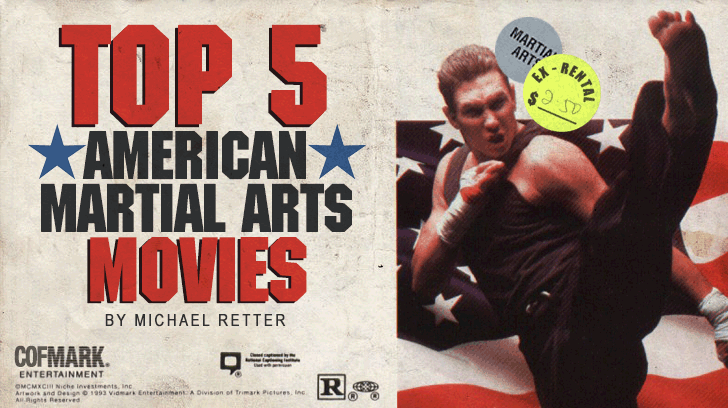
A large slice of every video shop was once dedicated to shirtless, blood-dripping men, striking clenched poses and displaying great fighting skills. Taking their key from Hong Kong cinema, the films of Jean-Claude Van Damme (perhaps the man who personifies video more than anyone) and the various sub-Van Dammes was a vibrant and varied industry of fighting tournaments programmers, bar room brawls and cops who knew chop-socky. They were born in a pre-CGI age, when audiences could trust the images as being true. At their best, these films were among America’s most cinematic, visually exciting and occasionally sublime.
Not since Sam Peckinpah’s The Wild Bunch was violence glorified so operatically. The “action-move” became part of film language, where time would stand still and a physical action, such as an aerial kick romanticised in slow-motion. But some of these films also represented the most authentic film noir of their time, B-movies about underground kick-boxing, gangsters and gamblers in seedy, neon-lit nightclubs. And like film noir, this genre was a meat and potatoes “people’s cinema”, dropping the hyferlutened for universal myths everyday people could relate to.
The time is right for retrospective, it was after all the American B-grindhouse pictures of the 30s, 40s and 50s that inspired the French New Wave. These films, with their strong style and aesthetics can be inspirational to a new generation…
No Retreat No Surrender (1986)
Perhaps the most successful invasion of another country’s film form/style into the American market since German expressionism’s distillation into film noir, this Hong Kong-produced American grindhouse picture brought Chinese cinema sensibilities to American soil for the first time.
Produced by legendary Hong Kong figure Ng See Yuen, directed by Corey Yuen (The Transporter) and inspired by the commercial success of The Karate Kid, Seasonal Pictures went overboard trying to make an “American” film; filled with breakdancing, parties, cold war jingoism and an all-American kid taking revenge on a criminal karate syndicate and Russian-hulk who crippled his father.
The fantastic villain of the picture was an unknown and over-zealous Jean Claude Van Damme, credited as playing “Ivan The Russian”, who actually injured many of the actors by not pulling his kicks and punches. But the broken noses and bones he inflicted resulted in a B-masterpiece, a strange mix of 80’s nostalgia at surface level with its routes found in Chinese Peking opera. How does the teenage all-American take on the muscles from Brussels? – by meeting the ghost of Bruce Lee in an abandoned house for training! Known in Germany with the equally cool title of Karate Tiger.
Bloodsport (1988)
Would you like to better understand the leader of the free world? President Trump has sighted this Cannon classic as one of his favourite films. Shot on location in Hong Kong in the dangerous, lawless “walled city”, Bloodsport stars Jean Claude Van Damme, who enters the infamous underground “Kumite” martial art tournament to avenge the death of his Master’s son.
High-ish production values and a rare perfectionist streak in the genre made this picture reach transcendent heights of poetic violence through the use of Van Damme’s physical performance in slow-motion.
Bloodsport is supported by an international cast of martial arts performers, each with their own distinct styles, such as sumo and monkey kung fu. Partly inspired by the international tournament within Enter the Dragon and even sharing one of its villains: the humongous and frightening Bolo Yung. Legend has it that the fight scenes were not working until Van Damme stepped into the editing suite and helped craft what we see so operatically today.
Bloodsport was a global smash hit that gave JCVD instant stardom and provided cinemas and video shops with a new viable take on the martial arts genre.
No Retreat No Surrender 3: Blood Brothers (1990)
The most insane martial arts film shot in America incorporates an albino terrorist leader’s plot to kill president George H. W. Bush. In classical Hong Kong-style, Blood Brothers bares no connection to previous NRNS-series instalments, apart from sheer wackiness, creative dance-like use of violence and a tacked-on cold-war nationalism verging on parody.
One of the great screen fighters, Loren Avedon, was brought into the series to replace Kurt McKiney, who broke his contract to return in the sequels. But these mishaps didn’t stop the strange phenomena of this movie series getting better with every sequel.
Seasonal film’s Hong Kong-style production on American soil brought truly daring and dangerous fight sequences to VHS. The other “blood brother” and truly joyous cinematic presence Keith Vitali, had a plaster-cast on his arm for the first few scenes because he genuinely broke it during filming.
Scenery is chewed and successfully digested by bleached blond and English-accented Rion Hunter as the leader of a strange gang of kung fu fighting communist terrorists. This all leads to the assassination plot of George Bush senior, incorporating real footage of the president, which along with strange moments of text used on a blank screen, constitutes the most unlikely tribute to Jean-Luc Godard in cinema.
Cheesy quotable dialogue and severe bone-crunching where it counts, NRNS 3: Blood Brothers is among the very cream of B-cinema and wildly enjoyable.
Deadly Bet (1992)
Deadly Bet came out of a wonderful straight-to-video company called PM entertainment, whose philosophy was to put all the money on the screen. Later on they would master the use of multiple flipping cars and pyrotechnic explosions to rival Hollywood, but in their early era, they would focus on smaller kickboxing noir pictures.
Within the world of sub-Van Dammes, Jeff Wincott has always been considered the greatest dramatic actor. This allowed the film more dramatic flexibility as Wincott’s gambling in Vegas gets out of control. The pivotal dramatic moment is when he uses his actual Wife as collateral but loses the bet, something that could only be done in straight to video B-movies. His wife is then forced to stay with Jeff’s nemesis(!) while money owed is somehow recouped.
The rest of the film is spent with Jeff working with gangsters, fighting in underground tournaments and trying to redeem himself . As ridiculous as the film sounds, it’s executed in a sincere way; the standard training montage given a really melancholic twist of moral and not just physical improvement. PM used real Vegas locations and casino interiors, giving this B-picture effective atmosphere. This is a rare treatment of the subject matter, which although still cracking various jaw-breaking punches and kicks, has superior lead actor and genre bit-players to have a noir film’s dramatic impact.
Drive (1997)
Drive is the last truly great American martial arts film, perhaps constituting its very high point before decline. With a medium budget big enough to allow tremendous visual scope and sci-fi themes, but small enough to prevent them from using CGI, Steve Wang’s passion project is the most balletic martial arts picture shot in America.
Hawaiian gymnastic B-Movie star Mark Dacascos stars as a Billion dollar man with a futuristic “power cell” embedded in his chest that makes him super-human. Problem is, that gives him a billion dollar price on his head. It’s a sci-fi road movie with comic relief from co-stars Kadeem Hardison and Brittany Murphy.
Wang’s ambition with this project was to create the most authentic tribute to the great Hong Kong martial arts films, specifically those of Jackie Chan and Dacascos’s amazing screen fighting abilities made him the perfect accomplice. Rather than the intended gun-play and explosions in the original script, Wang rewrote the action scenes to feature wall to wall physical martial arts combat. He warned Dacascos “I want my actors really hitting each other, you will be bruised from head to toe!”. The choreography is thus frenetic, often involving 3 or 4 people kicking and punching a back-flipping and swerving Dacascos at one time.
It’s an action film made with tremendous visual integrity. A confused studio butchered the film by 16min on release, but presented in the DVD is the full directors cut in all its actioned-packed glory.

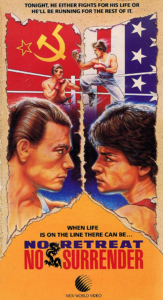
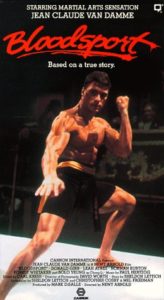
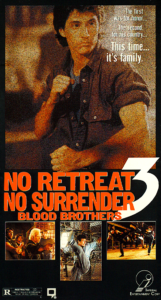
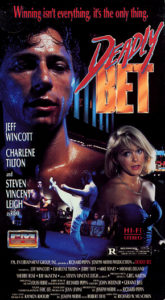
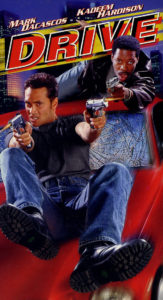


Is this supposed to be the best of the worst?
HAHAHA
Nice list, although it does seem to imply that there hasn’t been a single worthy American martial arts movie made in the last 20 years, which I’d disagree with. The likes of the Alpha Stunts showcase ‘Broken Path’ with Johnny Yong Bosch, the many Isaac Florentine & Scott Adkins collaborations, Eric Jacobus from The Stunt People’s directorial efforts ‘Contour’ & ‘Death Grip’, the John Hyams ‘Universal Soldier’ sequels ‘Regeneration’ and ‘Day of Reckoning’, and Michael Jai White flicks like ‘Blood and Bone’ are all high points in the genre.
There have been worthy martial arts films made in the last twenty years, but I dont believe there have been any as good as these classics. Being a top-5, there is only room for five. I dont think Scott Adkins is any kind of memorable screen presence of note, so Im always confused why people rate him and his pictures so highly. I would put a Garry Daniels film on this list before any of his work. But as I stated in the article, because of special effects and more sophisticated editing generally, the modern martial arts film simply doesn’t have an image as trustworthy as in the past. Thus modern stunt-work and set-pieces just doesn’t have the same meaning OR danger to me.
I want to write a piece about how bad the Hyams sequels are, particularly the torture porn aesthetics, aping the Gaspar Noe POV with blinking horror, which doesnt work with Universal Soldier .. The Original, if simpler, was much more classically and classily made with humour and star-power … Adkins is no JCVD or Dolph. He cannot carry the film and the directors middle-brow aesthetics dont match the low-brow revelry of Roland Emmerich. Its one of JCVD’s best films, his real prime.
Correction, the first Hyams sequel is very good, Universal Soldier: Regeneration.
Best of the Best, Perfect Weapon, Rapid Fire, Hard Target…thats just off the top of my head…the only two on your list i rate are Bloodsport and Drive. To each their own as they say..:-)
Perfect Weapon is pretty good …. But it has a disappointing climax, which doesn’t live upto the rest of the film. Hard Target is great (really great!), but I had to include Bloodsport in terms of purity and rhythmic filmmaking (now I have that Kumite song in my head!) and NRNS .. I cant have all Van Damme in the top 5. I like Brandon Lee, but Rapid Fire is hardly a great film.
I think Enter the Dragon should have made the list, but props to you for digging deeper than the typical. Kill Bill Vol. 1 would have made my Top 5 as well, but I can totally understand why most people wouldn’t really consider it. Another one I really like is Kiss of the Dragon. And if we’re on the subject of Seasonal Films being “American Made”, then NRNS II (Raging Thunder) would earn a position for sure. And yes, Best of the Best was pretty good too.
It would be easy to put NRNS 1,2,3 King Of The Kickboxers and then Bloodmoon so we have a Garry Daniels picture! And that wouldnt be a bad list … Raging Thunder is underrated, but its no Blood Brothers.
Yeah, in my mind, regardless of hour accurate this is, Enter The Dragon is a HK film with American money. Thats how I feel about it, despite looking the other way with the Seasonal productions.
Before Kiss Of Dragon, I would have put Crying Freeman with Dacascos.
Combining the star of ‘Kiss of the Dragon’ with the concept of Hong Kong movies being American made, based on this criteria I think you’d also have to throw in ‘The Master’. How can you not love a tale of Jet Li wondering the mean streets of L.A., with his Latino buddies and Anne Rickets, while being threatened by a mullet sporting Jerry Trimble!? 😛
Because its a not a very good movie (despite some stylish action flourishes) and Jet Li only works when he is a shaved-headed monk! I mean seriously, he hasn’t really made any classic films where he isn’t a shaved-headed monk. And yes I realise that The Master is the same character as in Once Upon A Time In China, Wong Fai Hung, but he has hair .. Hey, I didnt make the rules .. Would be putting King Of The Kickboxers ahead of The Master any-day for Trimble, “Hes a fucking cop!?” “Hot enough for you?” (these lines were brought to you be Keith W Strandberg).
Anyhow, The greatest double-take I have ever done was watching the MASTERPIECE that is Michael Mann’s HEAT and Jerry Trimble walks into frame and deliver lines with Pacino … So Many actors, dedicated to acting, went to the Strasbourg school, slept in their car for weeks, did off-Broadway, got great reviews, were thought of being the greatest up-and-coming dramatic talents etc WONT and DONT get that chance to do that. But thats how Jerry Trimble rolls.
“Jet Li only works when he is a shaved-headed monk! I mean seriously, he hasn’t really made any classic films where he isn’t a shaved-headed monk.”
Whoa! Come on now…’The Once Upon a Time in China’ movies, ‘Fong Sai Yuk’ and its sequel, ‘Dragon Fight’, ‘The Tai Chi Master’, ‘Fist of Legend’, ‘Hero’, ‘Fearless’..to name but a few! All are classics of not only martial arts cinema, but HK cinema overall!
He has, on the other hand, made movies cast as a shaven headed monk that suck. Just check out ‘The Sorcerer and the White Snake’ and ‘Gong Shou Dao’ for examples.
“And yes I realise that The Master is the same character as in Once Upon A Time In China, Wong Fai Hung, but he has hair .. Hey, I didnt make the rules”
Not true, it was actually completed in 1989, but Golden Harvest shelved it due to believing it wasn’t marketable. It was only after the success of ‘Once Upon a Time in China’ in 1991 that they dusted if off, and in an attempt to tie it in, re-named it ‘Wong Fei Hung ’92’, releasing it the following year.
Most of those Jet Li movies you just mentioned have him with a shaved head, you just prove my point!
Im pretty sure that the story of The Master also resembles that of the Chinese folk hero, so Im not sure about that.. But Im sure you are correct about the renaming ‘Wong Fei Hung ’92’ ..
Well. you’re moving the goal posts there. Nobody with even a passing knowledge of the genre would mistake the likes of Wong Fei Hung or Huo Yuanjia for monks, but let’s agree not to split hairs.
The first beer is on me for anybody who appreciates DRIVE, but I won’t be surprised if this list turns out to be controversial (as Paul pointed out, a lot of our post-millennium favorites such as Scott Adkins and Michael Jai White are missing from this list). That said, I would give anything for a proper Blu-ray release of the No Retreat No Surrender sequels. Are the rights for those movies tied up somewhere or does no distributor think they’ll make any money by releasing them? It’s a shame that they languish in relative obscurity.
I’v got a feeling some of those sequels may be available in Germany .. I once saw some youtube clips that were widescreen and had sum-what better resolution (maybe!). Im glad that the Seasonal pictures are quite indisputable choices, kind of gives me faith in the future appreciation for the genre. As I have said in the comments, Scott Adkins is a nothing screen presence and he makes films in an era of digital trickery, which makes the film’s physicality not have the same meaning.
Looking for Undisputed 2 & 3 🙂
Overrated!
Im so glad you included NRNS3: Blood Brothers, love that movie since I was a kid.
Its a classic of cinema!
I guess when you have to pick 5 from the hundreds of American martial arts films made (even if you limit it to a particular era, (80s & 90s in this case) it’s always going to look like a bit of a random list. There is a huge difference sometimes between ‘favourite’ and ‘best’.
I agree with Bloodsport, but I think my list would change the rest to:
The Last Dragon
Best of the Best (struggling to decide between part 1 & 2)
Rapid Fire
Only the Strong (doesn’t have quite the reputation as Drive, but it’s the earliest film I’m aware of that showcases Capoeira which is pretty special, I prefer it to Drive).
Depends what your judging it on though. A list based purely on the quality of the fight choreography would be entirely different to a list based on the quality of the overall film. One of my favourite American martial arts films is Ghost Dog: The Way of the Samurai, but I didn’t include it above as there’s not actual fighting in it, so maybe someone else wouldn’t count it as a martial arts film (but it definitely is).
NRNS is a favourite of mine too, but outside of the choreography being pretty good (the best JCVD has ever looked in a fight) there isn’t anything else in this film that’s well done. It’s ridiculously entertaining but not for the intended reasons. I can’t see how anyone could really consider it for a ‘best’ list, unless it’s a ‘best so bad it’s good’ list.
If you open it up beyond a particular era, the list would dramatically change. Sometimes people forget about western boxing as a martial art too. So if were going for all time, including boxing, and judging it objectively on which I think are truly the best overall films I’ve seen that feature martial arts or martial arts iconography of any kind, my list would be:
Rocky (always preferred it to Raging Bull)
The Adventures of Robin Hood (archery and European fencing, Errol Flynn vs Basil Rathbone is one of the best sword fights I’ve seen outside of an Asian film)
Star Wars (the ‘Force’ is clearly a Wuxia influenced version of Qi Gong power, Jedi Knights are clearly samurai soldiers, look at how Vader is dressed, the plot is straight out of a Samurai film and redressed as science fiction)
The Karate Kid (perhaps nostalgia is clouding my judgement a little, but its the best western version of the traditional ‘wise old master teaches downtrodden young student to stand up for them self’ story)
When We Were Kings (Oscar winning and fascinating documentary about the Rumble in the Jungle)
This is a fantastic lateral response, Doug – and you have out-Armond Whited me and I mean that in the best possible way, because I consider him to be a fantastically important critic.
The list was neither best for fighting or anything else specifically, but best films overall, taking in all factors. They tend to come from the same era because thats when America made most of its martial arts flicks.
I strongly disagree about NRNS, because apart from being visually sophisticated in terms of action (i.e good filmmaking), I think the film DOES have heart and soul. Sure, its incredibly rough around the edges and fails on various levels, but my enjoyment of the film is sincere and not ironic. My personal experience of the film is a childlike one and I think the archetypal themes are something that can be embraced, just as much as the cheesy and poorly doubled breakdancing. Like I said in the article, spiritually the film is has ancient Chinese roots and I feel this is expressed in the narrative and characters, if rather operatically and dressed up in Americana.
The Errol Flynn as Robyn Hood is certainly a great piece of action cinema that stands the test of time superbly (long takes and all). But like Rocky, these are not films we consider to be “martial arts films”, i.e Eastern-inspired forms of combat as cinema. I agree that technically what you are saying is truthful, but they come from a western tradition and it simply isn’t what is meant by “martial arts film” when the phrase is uttered.
But if I did include a boxing film, it would be Rocky 4 all the way. Raging Bull is excellent, my favourite Scorsese tied with Taxi Driver. But the original Rocky, as optimistic as it is, doesn’t compare to what I think is rather ground-breaking and underrated in Rocky 4. Rocky 4 takes its film form to the most stripped down basic narrative imaginable (much closer to a Chinese film in terms of avenging the death of a loved one) and allows for some of the most sophisticated visual staging and editing in cinema up until that point. Its such an audacious piece of art from its first moments of chrome boxing gloves slowly rotating, revealing national their flags, then colliding with speed and exploding in an expression of cold war nuclear panic. The rest of the film is basically a string of perhaps the greatest training montages ever put to film (certainly giving Hong Kong and Shaw’s a run-run for their money). Its fantastic visual story-telling that embraces its Russian subject matter by utilising dynamic Soviet-inspired montage. Credit must be given to Stallone for directing this picture, which may make this the most successful film by an Italian-American ever.
What is dressed-up as a jingoistic on the surface, actually ends in humanist drama, as Rocky in-effect ends the Cold War. It certainly has as much influence on NRNS as The Karate Kid did (another good film and worthy of your mention) and was the highest grossing film of 1984 (not that such things matter, but its an indication that it meant something to a lot of people).
As for Star Wars, you are stretching things to far, even if you were Armond White.
I don’t particularly like Ghost Dog, because I think its one of the directors weaker films, though on paper I liked the idea and in certain moments it does soar/is an alright film. I just don’t think Jim Jarmusch quite understands the hitman and action genres, which makes me prefer superior films like Silent Trigger and Crying Freeman to his Melville tribute. I will revisit Rapid Fire at some point, I was underwhelmed at the time when first watching on VHS. Showdown In Little Tokyo is pretty good, but its missing a reel (literally, they cut that thing down to about 79min and Im sure it doesn’t work as well as it could), but I really like what is there at least, its just kind of incomplete. Best Of The Best is very cool, but IMHO it doesnt quite deserve to be on the list and certainly not above the others that are there. I have not seen The Last Dragon, so I admit ignorance about that one.
Again, thanks for your contribution.
Great response, Thanks.
There is some additional fun to be had with Showdown in Little Tokyo. Near the beginning Cary-Hiroyuki Tagawa kills one of his own henchmen then the henchmen pops up in the very next scene. (I’m guessing they changed their mind about the scene order when editing and didn’t notice).
Plus it has the classic dialogue:
Brandon Lee: You have the biggest dick I’ve ever seen on a man.
Dolph Lundgren: Thanks.
Oh yeah, its quite a funny film.
Brandon Lee: Now lets eats sushi off some naked chicks!
Not a bad list. I can see where you were coming from with each title. I am happy that you included a Steven Vincent Leigh movie on your list, but like everyone else that commented, I would have listed it differently.
5. To Be The Best. This is the greatest Kickingboxing tournament movie. 5 vs 5 team combat. I never knew the rules but it worked out great. The cast was top notch (for PM Entertainment) with talents like Michael Worth, Ron Yuan, Martin Kove and Steven Vincent Leigh.
4. Bloodmoon. Great choreography. That’s it. The story was kinda dull, but i dug the cinematography of every fight. Gary Daniels, Chuck Jefferys, Hakim Alston and Darren Shahlavi (RIP) all put in work in this Gem.
3. Kick Of The Kickboxers. This is the Loren Avedon movie I would have chose over No Retreat No Surrender 3. Not only does it have Billy Blanks playing the main villain, Keith Cooke is around long enought to show off his kicking skills.
2. Only The Strong. Though in terms of fights scenes, Drive is the superior film, Only the Strong had the heart. It was the Stand And Deliver of US Martial Arts films. Plus it showcased Capoeira.
1. Showdown In Little Tokyo. Not only is this the best US Martial Arts film every made, it’s also the best buddy cop film ever made (that’s under 80 minutes). Take away the 2 minute and 38 second opening intro, you got a fast pace Martial Arts film with flashy suits, a good amount of nudity, and 8 action scenes (7 of which were Martial Arts fights). In a film where the actual run time barely hits 70 minutes (not counting opening and closing credits), you see Brandon Lee and/or Dolph Lundgren beating the shit out of someone every 8:45 minutes.
Just quickly, becuase I must go to bed (One AM Australia time!) I very much want to see To Be The Best, it came out of the same period of PM Entertainment Las Vegas Kickboxing noir films such as Deadly Bet (in my list) and Final Impact, which are both awesome. Thanks for the reminder!
This post certainly got everyone going. Everything from the anti-Adkins sentiment to the Armond White praising certainly makes this a cluster.
As Scott Adkins said in his recent interview here, most American productions didn’t know how to shoot action as well as Hong Kong, and a lot of these aforementioned films have that problem. I know Hollywood is guilty of trick editing and special effects, but Adkins doesn’t rely on any of that, and certainly doesn’t utilize undercranking. (At least not like the kind that looks like fast forward.)
It seems hard to justify naming some of the 80’s and 90’s fare as legitimately good. I can see them being enjoyed as “so bad they’re good” or guilty pleasures, but I can’t ignore the cheesiness of the NTNS films, Showdown in Little Tokyo, and other similar fare.
As Paul mentioned, guys like Van Damme and Seagal were at the right place at the right time, and because most American audiences never saw such high kicks or grappling in mainstream Hollywood, they could get away with less intricate choreography.
At the top of my head, Drive is definitely one of the best. I would love to include Scott Adkin’s films, but since they’re mostly filmed in Europe, Thailand, and Canada, can they be considered American films?
Many of these productions have that aspect going for them. Sometimes being an English language production doesn’t make a movie “American.”
Grappling and MMA generally isn’t very cinematic. The best fight scenes are closer to dance than real fighting (even if we dont want to admit it) hence its origins in Peking Opera.
To say the NRNS films are illegitimate choices is short-sighted. You have to look past the hokeyness and see the visual sophistication and artistry in the work. These films are THE OPPOSITE of what Adkins is talking about, they do know how to shoot a fight and get the required performances. There is a reason these cheap films are still discussed and revered so many years later.
“To say the NRNS films are illegitimate choices is short-sighted. You have to look past the hokeyness and see the visual sophistication and artistry in the work. These films are THE OPPOSITE of what Adkins is talking about, they do know how to shoot a fight and get the required performances.“
I’m not sure if I’ve interpreted your comment correctly, but are you saying you believe the fight scenes in a Scott Adkins movie are poorly filmed and performed? I’d have to strongly disagree, at least when it comes to the movies he’s known for. It was Ross Clarkson that lensed the likes of the ‘Undisputed’ and ‘Ninja’ flicks, who’s one of the most respected action cinematographers and cameramen in the business, so if anything the camera work during these fights is as integral to them as the performance of the fight itself. It’s not the same as the camerawork in the NRNS productions, because it’s evolved since then. An evolving style doesn’t automatically translate to “it’s not as good as it was back then.”
No, I was referring Andrew Hernandez quoting Scott Adkins: “As Scott Adkins said in his recent interview here, most American productions don’t know how to shoot action as well as Hong Kong..”
“Evolving style” doesnt automaticity mean bad at all (Ip Man is a great example), but there is a general trend to cut more, have shaky camera movement and of-course use all kinds of digital trickery enhancement, which I believe all muddle the clarity of what is actually going on.
Cool article Retter.
I’d have to include at least one Chuck Norris movie in the list. Like him or dislike him, the guy did a lot of for American made Martial Arts productions. Love the NRNS movies, but I dont see them as U.S films, more co-productions.
Here’s a random and useful fact for you, if its true. Bloodsport is one of Donald Trumps favorite films. I wonder if he reads up this site from time to time?.
Link- http://uk.businessinsider.com/donald-trumps-favorite-pop-culture-movies-tv-books-music-2016-8/#bloodsport-2
I agree, DragonClaws, it is difficult to deny the influence of Chuck Norris on the American martial arts scene. What do you think is Chuck’s best movie? I have to be honest, most of my favorite Chuck Norris flicks seem to involve more gunplay than martial arts, the exception perhaps being Chuck’s massive brawl against the biker gang in ‘Silent Rage.’ But I definitely have a soft spot for:
-the aforementioned ‘Silent Rage’
-‘Lone Wolf McQuade’
-‘Invasion U.S.A.’
-‘Code of Silence’
-‘The Delta Force’
Yeah, after 1980 he slowly relied more and more on gunplay. Like a lot of screen heroes in the 1980’s. He was pretty late getting into acting business too. Hard to pick his best, but I’d say Forced Vengenace is the one for me. While I think Code Of Silence and Hitman are pretty good, FV features more Martial Arts action.
Yes, I mentioned that in the article!
Chuck would certainly be one of the most important American martial arts actors for sure, but his films arent the best martial arts pictures America made. I havent seen the Lone Wolf McQuade pictures or Missing In Action, so I have plenty of Norris blind-spots … But its hard to dive-in when Iv never really been satisfied. I like him more as a cultural figure than for any of his specific film work (albeit pretty awesome fight in Way Of The Dragon). My Chuck soft-spot is Walker Texas Ranger and my dream is to reboot the series starring Jeff Wincott. There, I said it.
As an actual martial artists, hes very well respected and has gone multidisciplinary, earning a black-belt in Brazilian jujitsu.
I essentially agree with everything listed with the exception of DEADLY BET. Don’t get me wrong. I dig the movie, but Jeff Wincott did others that were so much better such as MARTIAL LAW 2: UNDERCOVER, MISSIONS OF JUSTICE, or MARTIAL OUTLAW.
Firstly Scott, kudos for giving Wincott props as a lead-fighting-man. I swear that some of this work will be considered more valuable in a scholarly context with the passage of time and revaluation.
The three Wincott pictures you mentioned are pretty good … But none of them have the pathos and tangible noir atmosphere of Wincott’s gambling, drinking and fighting turn in Deadly Bet. Nor are they as well made. Outside of a few key fight scenes (like the gauntlet sequence in Mission Of Justice) there isn’t as much that’s overly memorable about them.
And if you know anything about the real man, youl know that Deadly Bet in some ways mirrors his own life struggle with addiction and so the film cant help but have different layers of meaning. What presents itself as a standard B-movie ends-up being far more substantial, particularly when rock-bottom is shot amongst those authentic Vegas locations. And unlike the other films, its a better opportunity for Wincott to express a more complex character.
In terms of pure action, I dont think Deadly Bet is superior to the films you mentioned, but its a solid depiction, rather workmanlike but well covered, that certainly serves the narrative each time it happens, whether that be his initial fall from grace, the fights he watches and places bets on, his work as a loan-shark or final attempts to redeem himself. They all propel the picture forward.
Part of the reason I chose this film is because I wanted a Jeff Wincott and PM Entertainment picture on the list. For me, this film is a close-tie with Final Impact, which I think is just as melancholic a portrayal of a kickboxer story. These PM Noir films are important to me and Im proud to have a more obscure title like this listed, for what I think are very legitimate reasons.
One final note, Iv been very pleased to hear ALL of the comments people have left, it shows that there is a lot of expert commentary out there on the genre. Some of the views expressed have made me reconsider certain titles I have dismissed and to seek out other I haven’t seen. But most of all, its comforting to know that the culture of appreciation for this genre is strong going forward. So thank you to everybody!
Gotcha, though I would say the movie only attempts to have pathos and a tangible noir atmosphere. I don’t see where it succeeds on that level. Hard for me to feel sorry or relate to a character that continually makes bad decisions and shoots himself in the foot. For me, the fight scenes are what it’s about, and the fights in DB are sort of meh compared to those found in the ones I mentioned. But hey, it’s your list, and as I said I essentially agree with it.
I like Jeff Wincott. I wish he became a bigger star. It’s sad that his most recent roles have been for playing extras in single TV episodes or small films.
He’s stated he’s always wanted to work with Ching Siu-Tung. If only.
I’ve only seen a handsfull of his films. 1995’s Last Man Standing was a nice one with a good balance of shootouts and fights. Open Fire was Die Hard in a Factory that had a few decent action moments, but was very derivative and uninteresting.
Then there was When The Bullet Hits the Bone which is more of a dramatic thriller than action picture, (No martial arts) but a very good effort that tried to do a lot with limited resources.
I’ve wanted to see Street Law where he fights Paco Christian Prieto, Killing Machine, and Fatal Combat.